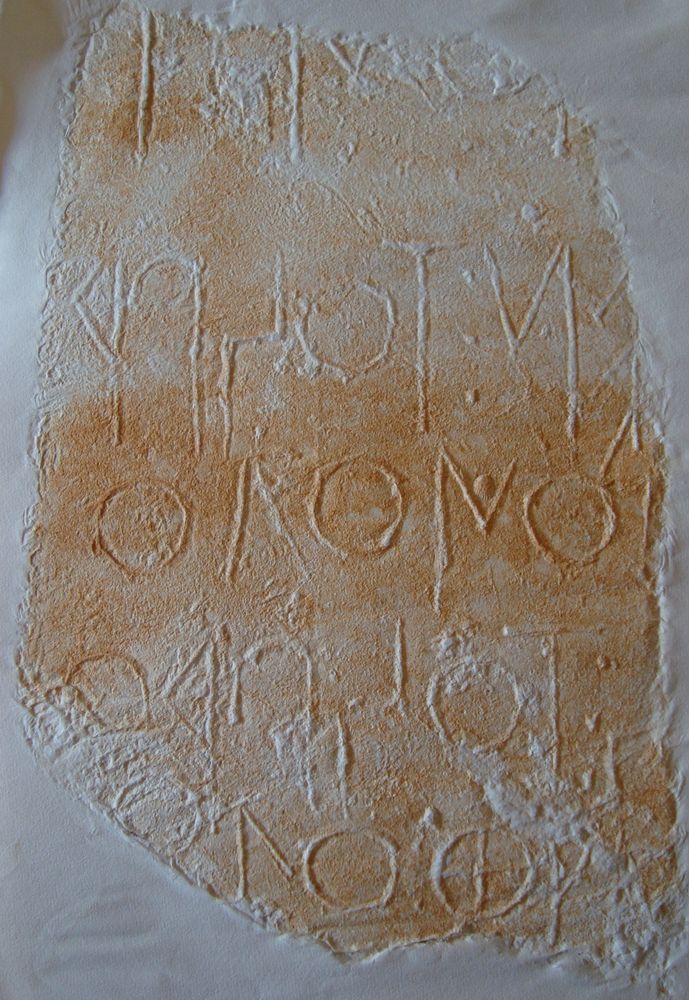EpiDoc XML:
IGCyr0001002
Trismegistos ID:
738094
Source description
Support: Fragmentary limestone stele broken on all sides except the left rim (w: 0.33 × h: 0.45 × d: 0.20).
Layout: Inscribed boustrophedon on the front face.
Letters: 0.07; archaic shape of letters: three-stroke iota with right angles, rounded pi, three-stroke gamma combining classical and isosceles forms.
Date: End of seventh or beginning of sixth century BC (lettering).
Findspot: Found in 1964 at Cyrene ➚: on the South bank of the Wadi Bel Ghadir, at the Eastern end of the West necropolis.
Place of origin: Possibly Cyrene ➚, West Necropolis.
Last recorded location: Cyrene Museum, inv. number unknown. Last seen by C. Dobias-Lalou in 2010 in Shahat: Cyrene Museum.
Text constituted from: Transcription from stone (CDL).
Bibliography
Dobias-Lalou – Mohamed 1995, whence SEG, 45.2170; IGCyr 000100 ➚. Cf. Gasperini 2009 and Dobias-Lalou, BE, 2011.650, whence SEG, 59.1912; Dobias-Lalou 2015, whence SEG, 65.2015; Marengo 2016, p. 163-164.
Text
Apparatus
5: θυγ[ατ] a form of θυγάτηρ or of a related word beginning with θυγατρ-
French translation
Intraduisibile (voir commentaire).
English translation
Not usefully translatable (see commentary).
Italian translation
Intraducibile (vedi commento).
Arabic translation
غير قابل للترجمه بشكل جيد
Commentary
L. 1 either a compound adjective or a personal name including the word τιμά 'honour'.
Ll. 2-3 either τοὶ πρόγονοι or το͂ι προγόνōι, with the word for 'forefather'.
Ll. 3-4 the lacuna hides probably a proper-name, followed by a patronym: το͂ι Πρό|ϙλō: 'son of Proklos'.
With πρόγονος and θυγά[τηρ] ('daughter' or a related word), a funerary interpretation of the text seems to be the most plausible. The exact meaning of punctuation is not determinable and does not help to understand how a forefather, Proklos and a possible daughter are related. The incomplete word at line 5 might also have been a derived noun, meaning 'son of the daughter, grandson'. However the word corresponding to Attic and koine ἀδελφιδοῦς is not attested in other dialects and it would be hazardous to restore its supposed dialectal form.
Gasperini 2009 rightly points out that there are some doubts about the provenance of the stone. However, what remains seems anyway to lead to a funerary topic.
CC BY-NC-SA 4.0 Deed Attribution-NonCommercial-ShareAlike 4.0 International License.
All citation, reuse or distribution of this work must contain a link back to DOI: https://doi.org/10.60760/unibo/igcyrgvcyr2 and the filename (IGCyr000000 or GVCyr000), as well as the year of consultation.




